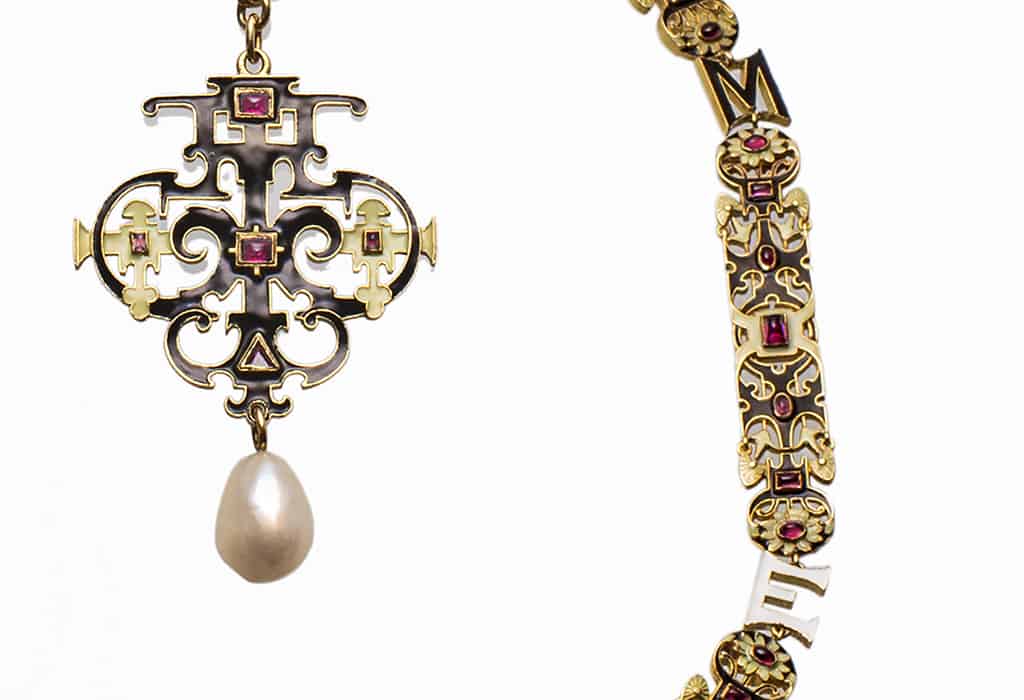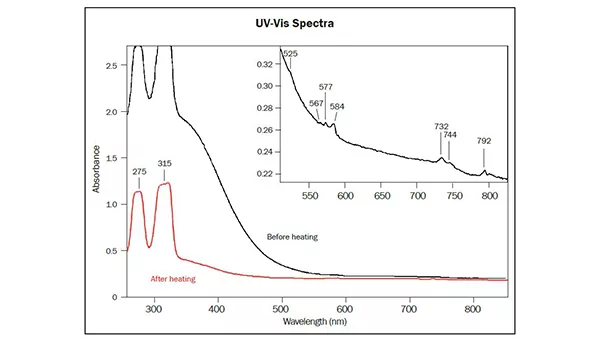
Pair of sautoirs by René Lalique
first published in Facette 27 (June 2021)

René Lalique (1860-1945) was one of the most ingenious and creative designers of jewellery and glass objects at the end of the 19th and beginning of the 20th century. He significantly contributed to the Art Nouveau and Art Déco periods. Born in a small village in Champagne, a region famous for sparkling wines located in the Northeast of France, he came to Paris in the 1870s where he started his training in a jewellery workshop and later opened up his own atelier. This is where he developed and produced his characteristic floral designs, often integrating enamel, glass, and organic gem materials in his masterfully crafted pieces.
We recently had the pleasure of investigating a pair of sautoirs created by René Lalique dating from the end of the 19th century (Figure 1). The pair of sautoirs were made in a geometric floral design, each highlighted with a pendant containing a slightly baroque drop-shaped saltwater natural pearl (Figure 2). In addition, the centre of the larger sautoir was accentuated by a small button-shaped assembled cultured blister (a so-called mabé) of matching colour, presumably an early product of pearl cultivation. Original drawings of the design are documented in a book by Sigrid Barten (René Lalique, Schmuck und Objet d’Art 1890-1910, Prestel-Verlag, München 1989).
Based on the provided documentation, these two pearl sautoirs were formerly in the collection of Countess Edmond de Pourtalès, who was a leading figure of the Parisian society in the late 19th century. The initials ‘E’ and ‘M’, artistically integrated into the necklace design (Figure 2), are presumably a reference to the first names of her husband ‘Edmond’ and herself ‘Mélanie’.



